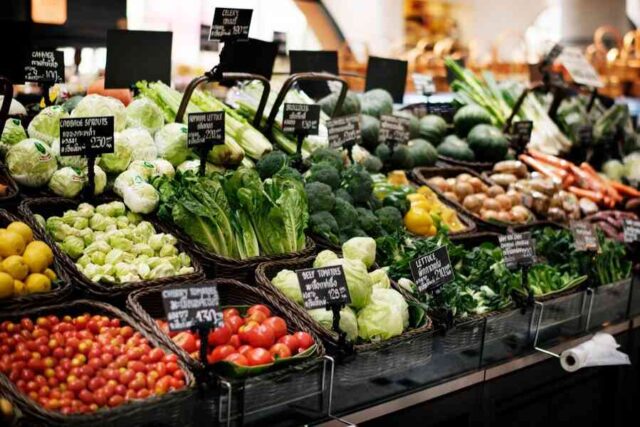As rising prices pressure household budgets, cutting grocery costs has become more critical than ever. This leads many shoppers to ask a key question: What is the cheapest grocery store? While it sounds simple, the answer depends on where you live, your shopping habits, and the products you buy most often. Some retailers keep prices low with generic brands and minimal frills, while others offer value through memberships, loyalty programs, or bulk buying.
Your choice of grocery store can significantly affect your monthly spending. National chains like Aldi and Walmart are known for their everyday low prices, while bulk retailers like Costco and regional players like WinCo also offer impressive savings. However, “cheap” doesn’t always equal best—it’s important to also consider factors like product quality, variety, and convenience.
In this comprehensive guide, we’ll highlight the top grocery stores for budget shoppers and compare their pricing strategies, customer experiences, and value-added perks. Whether you’re feeding a large family, shopping on a tight budget, or simply looking to save more each month, this article will help you determine the cheapest grocery store for your lifestyle so you can shop smarter and spend less.
What is the cheapest grocery store?
The cheapest grocery store depends on where you live and what you buy, but Aldi consistently ranks the most affordable. Stores like Walmart and WinCo also offer low prices on essentials. Costco can save money in the long run if you prefer buying in bulk. Comparing weekly sales and using loyalty programs can also reduce your total grocery bill.
Why Do Grocery Prices Differ So Much Between Stores?
Grocery prices vary dramatically from store to store, and several key factors influence these differences. One major factor is the store’s business model. For example, discount retailers like Aldi keep prices low by limiting product variety, focusing heavily on private-label items, and cutting operational costs. On the other hand, warehouse clubs like Costco operate on a membership model, offering bulk goods at lower per-unit prices.
Regional costs also play a significant role. A store that’s inexpensive in one state may be more expensive in another due to differences in rent, labor costs, shipping logistics, and local taxes. Seasonal shifts, fuel prices, and inflation can also temporarily impact food pricing.
Retailers’ supplier agreements and brand partnerships affect pricing too. Stores with strong negotiating power can offer better deals on name-brand goods, while others emphasize premium in-store experiences or organic options, which can drive prices higher.
Additionally, private label or store-brand products often cost a fraction of the cost of national brands, helping some stores maintain a lower average basket price. Promotions, digital coupons, and loyalty programs further complicate pricing comparisons.
If you compare deals across different store names or chains, understanding their pricing models and offerings can give you an edge. That’s why knowing these dynamics is essential when figuring out which is the cheapest grocery store is for your shopping habits.
Which Major Grocery Chains Offer the Best Prices?
When trying to find the cheapest grocery store, it’s essential to examine the major players in the industry and how they structure their pricing. Each chain has its own strengths, pricing strategy, and target demographic, which can influence how much you spend at checkout.
Aldi, the Leader in Budget Pricing
Aldi is frequently recognized as one of the most affordable grocery stores in the U.S. Its minimalist store layout, focus on private-label products, and low staffing levels allow it to keep prices extremely low. Shoppers looking to save on everyday essentials without sacrificing too much quality often find Aldi to be a top contender.
Walmart Offers Everyday Low Prices Nationwide
Walmart’s “Everyday Low Price” guarantee is more than a slogan. With thousands of locations nationwide, Walmart consistently offers competitive pricing on everything from groceries to household goods. It’s especially convenient for those who want a one-stop shop for food and non-food items.
WinCo Foods Offers Bulk Deals Without Memberships
Popular in the western U.S., WinCo Foods operates with a warehouse-style model similar to Costco but without the membership fees. Known for large bulk sections and lower-than-average prices, it’s a go-to option for families and high-volume shoppers.
Costco is Great for Bulk Shoppers
Although Costco requires a membership, the savings on bulk purchases often outweigh the annual fee. From meat and produce to pantry staples and frozen goods, Costco offers excellent per-unit pricing for those buying in large quantities.
Trader Joe’s Blends Quality with Affordability
Trader Joe’s might not be the cheapest overall, but it shines in terms of quality and specialty products. It offers excellent value for unique items, organic choices, and gourmet selections at lower prices than traditional supermarkets.
Tips to Save More No Matter Where You Shop
Finding out what is the cheapest grocery store is only half the equation—how you shop can be just as important as where. Adopting smart shopping habits can dramatically reduce your grocery bill regardless of your preferred store. Here are several proven strategies to help you stretch your dollars further:
- Use Loyalty Programs: Most grocery stores offer free loyalty cards or digital memberships that unlock exclusive discounts, member-only pricing, and personalized deals based on your shopping habits.
- Shop Weekly Sales: Look at store flyers and mobile apps for weekly deals on staples like meat, dairy, and produce. Building your meal plan around sale items can lead to significant savings.
- Buy Generic or Store Brands: Store-brand products are usually manufactured to the same standards as name brands but cost significantly less. They’re a simple way to lower your total without sacrificing quality.
- Use Cashback and Coupon Apps: Apps like Ibotta, Rakuten, and Fetch Rewards give you money back or points for grocery purchases. Pairing them with manufacturer coupons maximizes savings.
- Stick to a Grocery List: Planning meals and writing a list before shopping helps prevent impulse buys, which often inflate grocery bills.
- Buy in Bulk When Appropriate: Bulk buying reduces the per-unit price and lowers long-term spending for non-perishable staples such as pasta, rice, or canned goods.
How Store Location and Regional Trends Affect Grocery Costs
Store pricing isn’t uniform across the country. Rural vs. urban locations see different cost structures due to shipping, labor, and real estate prices. Depending on local demand and competition, even stores within the same chain may charge more or less.
In high-cost-of-living areas, grocery stores face higher operating expenses, which they pass on to consumers. In contrast, stores in smaller towns may offer lower base prices but have limited variety.
Some regions have access to more locally sourced products, reducing transport costs and keeping prices low. For example, due to proximity to farms, produce might be cheaper in California than in colder northern states.
Understanding these dynamics helps you understand why one Aldi or Walmart may be cheaper than another and how to factor this into your budgeting strategy.
Comparing “What Is the Cheapest Grocery Store” by Category
When determining the cheapest grocery store, it’s essential to break it down by the types of products you shop for most often. Not every store is cheapest across the board—some specialize in specific categories. Here’s a detailed comparison by grocery type:
- Cheapest for Produce: Aldi and local ethnic grocery stores consistently offer the lowest fresh fruit and vegetable prices. Their direct-from-distributor sourcing and high inventory turnover help keep produce affordable and fresh.
- Cheapest for Meats and Proteins: WinCo and Costco frequently lead in low-cost meat and poultry options. Their ability to sell in bulk and with minimal packaging and operational costs allows them to offer some of the best prices per pound.
- Cheapest for Packaged Goods: Walmart dominates packaged grocery items such as breakfast cereals, chips, and canned goods. Its in-house brands and large-scale inventory allow for rock-bottom pricing on pantry staples.
- Cheapest for Organic and Specialty Items: Trader Joe’s and Aldi offer surprisingly affordable organic products and diet-specific items. They balance specialty food quality and low price, which is ideal for budget-conscious health shoppers.
- Cheapest for Bulk and Stock-Up Essentials: Costco remains unmatched for bulk grocery shopping. With large-format packages and consistently low per-unit pricing, it’s the go-to option for households needing long-term storage or feeding large families.
Final Remarks
Finding the Cheapest Grocery Store for You. Ultimately, the cheapest grocery store depends on your shopping habits, priorities, and location. While Aldi, Walmart, and WinCo consistently rank among the most affordable, factors like product variety, quality, and bulk buying opportunities may influence your final choice. Combine smart shopping strategies with the right store selection, and you can cut your grocery expenses without compromising your lifestyle.
FAQ’s
Is Aldi the cheapest grocery store?
Yes, Aldi is widely known as one of the most affordable grocery chains. This is thanks to its focus on private-label brands, limited product selection, and low operating costs, all of which help keep prices down.
Are warehouse stores like Costco worth it for small families?
Yes, they can—but only if your household regularly uses bulk items. Otherwise, perishable goods may expire before they’re used, which could offset the savings and increase waste.
Can I find healthy food at the cheapest grocery stores?
Absolutely. Budget-friendly stores like Aldi and Trader Joe’s often carry affordable organic produce, whole grains, and other healthy options that rival higher-end supermarkets.
How can I track grocery prices over time?
You can use apps like Flipp, Basket, or your favorite grocery store’s official app to compare weekly ads, monitor price changes, and catch the best deals throughout the year.
Are store loyalty programs worth it?
Yes, loyalty programs offer access to exclusive discounts, member-only promotions, and digital coupons that can add significant savings over time, especially for frequent shoppers.
Do prices vary at the same chain in different cities?
Yes, pricing can differ based on regional factors like supply chains, real estate, local taxes, and competition, meaning the same chain may not be equally affordable everywhere.














